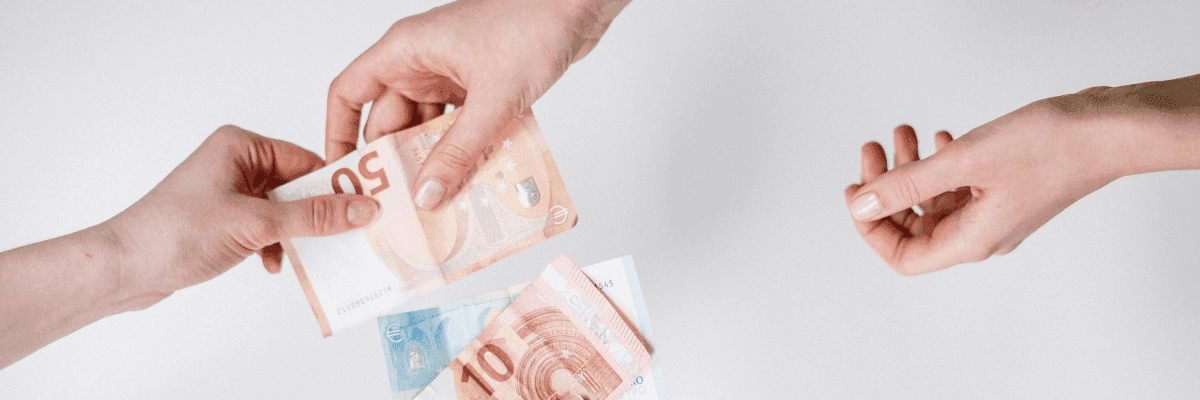Embarking on a journey to transfer money is a common financial undertaking. However, it requires attention to detail.
Whether sending funds to a friend or family member or paying for a service, ensuring a smooth transaction hinges on having the right information at your fingertips.
In this blog article, we’ll answer the question: What details do you need to transfer money? Now, let’s explore the crucial elements that pave the way for seamless money transfers.
Different types of bank transfers
When it comes to making a bank transfer, there are various straightforward methods at your disposal:
Online bank transfers
Access your online banking account and navigate to the payment section. Follow the provided instructions to ensure accurate bank account details are entered. Many banks even offer mobile apps, making transferring funds between accounts a breeze.
Telephone transfers
Reach out to your bank’s telephone banking service. Communicate your intention to make a bank transfer. Depending on the bank, you might either converse with a representative or follow an automated process.
In-person bank transfers
Visit a nearby branch of your bank for face-to-face assistance. Discuss your transfer needs with a customer service representative. They can efficiently guide you through transferring money or depositing cash into the intended recipient’s account.
The beauty of bank transfers lies in their user-friendly nature, whether executed online, over the phone, or in person at a branch.
What do I need to make a bank transfer?
No matter your chosen method for transferring funds, the specific account details you need for a bank transfer remain consistent:
- The amount or money you want to send
- Full name of the person you’re transferring funds to
- Recipient’s 6-digit sort code
- The recipient’s 8-digit account number
- A payment reference, often featuring your name or customer number, to ensure proper identification
- Selection between immediate or scheduled transfer
Sometimes, the recipient bank’s address is needed to validate the sort code.
Once you’ve initiated a transfer to an individual, their details are often stored, streamlining future transactions.

Transferring money to a business bank account
Transferring funds to a business account is the same as to a personal account. However, in this case, all you need is business bank account details.
- Name of business (or individual if it is a sole proprietorship)
- Six-digit sort code
- Eight-digit account number
- A payment reference
Some financial institutions may inquire as to whether or not your deposit is going into a business account as opposed to a personal one.
Also, you should note the company’s address and company number for your records in accounting.
Extra security details
New regulations introduced to combat fraud require you to supply additional information when initiating a bank transfer.
One of them is the implementation of Strong Customer Authentication (SCA). It helps prevent fraudulent use of your bank account and online banking by verifying that you have authorized a payment.
It necessitates the use of two-factor verification while initiating a new bank transfer or establishing a standing order.
The online bank transfer can only be authorized when you enter the verification code. Therefore, check if your bank has the correct contact information, as they will send a verification code to your phone or email.
The details for an international bank transfer
When conducting international money transfers, the process involves the use of the Society for Worldwide Interbank Financial Telecommunications (SWIFT) network.
This network utilizes a unique SWIFT code, also known as Business Identifier Code (BIC), assigned to each financial institution. It ensures secure international transfers.
In a nutshell, the essential details for an international bank transfer encompass:
- Recipient’s name or company name
- Recipient’s BIC, also referred to as a SWIFT code
- Recipient’s international bank account number (IBAN)
Additionally, you’ll typically need to specify the desired foreign currency for the payment and the recipient country.
Sending an international bank wire necessitates providing the recipient’s name, address, the bank’s SWIFT BIC, bank account number, and in some cases, the International Payments System Routing Code for specific countries.
Avoiding issues with bank transfers
To get your money back can be a hustle if you accidentally transfer funds to the wrong account. However, there are some precautions you can take to avoid this situation:
Double-check bank details
Many high-street and online banks offer payee confirmation to protect you when you send money by bank transfer.
In general, payee confirmation means that the bank verifies if the name you’ve given matches the name associated with the account number and sort code.
However, this process only happens when you transfer money to someone you have never sent money before.
Even though some banks do a payee confirmation, your bank may not be one of them. Therefore, it’s always better to check all the details again before making a bank transfer.
Moreover, it may be beneficial to make a test bank transfer of only a pound or two before committing to the complete transfer.
Avoid overdrawing your account
Unless you specify a different payment date, the funds will be deducted from your account as soon as the transfer information is received.
Moreover, charges are incurred as soon as the account information is provided. Therefore, keep enough money in your bank account to avoid overdrawing your account at all costs.
Be attentive to any warnings regarding confirmation of payee
The importance of heeding payee confirmation alerts cannot be overstated. These alerts serve as crucial markers in financial transactions. It’s essential to carefully review the accuracy of the provided bank information if such a confirmation warning arises.
This step is vital because discrepancies could potentially signify a fraudulent attempt to redirect funds to unauthorized recipients.
By staying vigilant and promptly addressing any discrepancies, you play a proactive role in safeguarding your financial transactions from potential fraudsters.
What to do if you make a mistake?
If you accidentally transfer money to the wrong person or make a mistake while writing bank details, it’s crucial to promptly contact your bank. Unfortunately, once the bank transfer has been processed, your bank is unable to reverse it.
Gather all relevant information, including transaction specifics, together with your personal information (ID, address, etc.).
Even if the mistake wasn’t made lately, your bank will begin looking into it as soon as you report it, often within two business days. During the processing time, your bank gets in touch with the receiving bank and demands your money back.
Should complications arise, such as the recipient’s refusal to refund the money, your bank will inform you of the investigation’s outcome within 20 working days from the date you reported the error.

